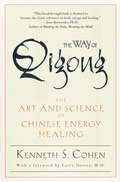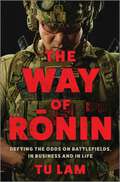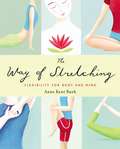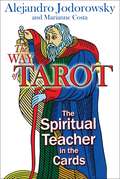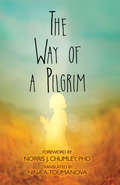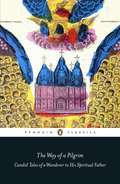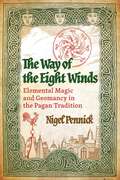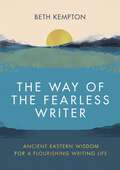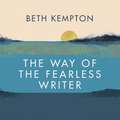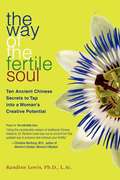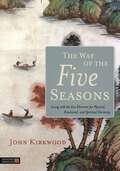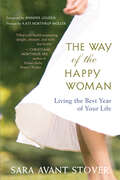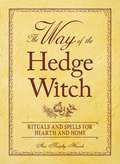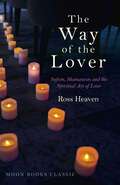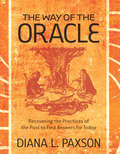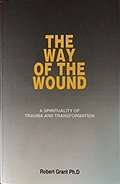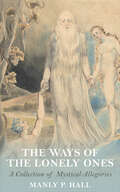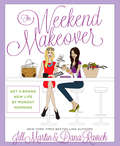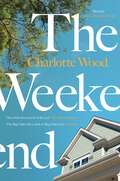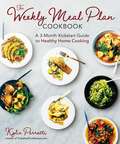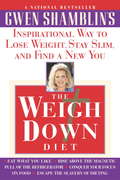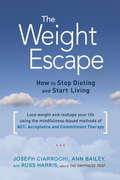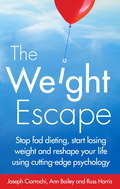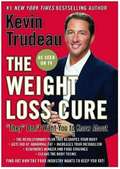- Table View
- List View
The Way of Qigong: The Art and Science of Chinese Energy Healing
by Kenneth S. CohenQigong is an integrated mind-body healing method that has been practiced with remarkable results in China for thousands of years. The Chinese have long treasured qigong for its effectiveness both in healing and in preventing disease, and more recently they have used it in conjunction with modern medicine to cure cancer, immune system disorders, and other life-threatening conditions. Now in this fascinating, comprehensive volume, renowned qigong master and China scholar Kenneth S. Cohen explains how you too can integrate qigong into your life--and harness the healing power that will help your mind and body achieve the harmony of true health.
The Way of Ronin: Defying the Odds on Battlefields, in Business and in Life
by Tu LamFrom Special Forces veteran and internationally respected teacher of Ronin Tactics to streaming and videogame fan favorite, Tu Lam&’s memoir will captivate, astonish, exhilarate, and even profoundly resonate.Tu Lam has become known not just for his accomplishments as a decorated Green Beret, but also for his work outside the military, including: Training citizens and law enforcement professionals all over the country Providing aid to both active and retired soldiers with physical and mental health issues Co-hosting the History Channel&’s Forged in Fire: Knife or Death Appearing in and contributing to the world&’s bestselling video game, Call of Duty: Modern WarfareIn The Way of Ronin, he reveals his against-all-odds story. Tu Lam&’s resilience, dedication, and relentless pursuit of freedom saw him achieving Full Spectrum US Special Operations across twenty-seven countries worldwide for more than twenty years, only to pay the price of his own physical and mental trauma as well as addiction.That decision led him to more than two decades of grueling instruction in every facet of the special forces, then deployment to war and conflict zones—all while channeling his inner anger in secret underground no-holds-barred fighting matches. When he finally retired from the military after more than two decades, his demons caught up with him, leading to years of addiction. But even that didn&’t defeat him. Confronting his demons, he emerged triumphant. Now he shares the gripping details and riveting intricacies of this awe-inspiring journey.Tu Lam&’s life is, at times, all too real, and at many others times, almost unbelievable. For fans of Jocko Willink and David Goggins, The Way of Ronin is an ultimately triumphant autobiography of what one man can accomplish against seemingly insurmountable odds.
The Way of Stretching: Flexibility for Body and Mind
by Anne Kent Rush- The book features stretching exercises designed to prevent injury and to promote the healing of specific body parts.- Rush incorporates ideas from many different traditions, including T'ai Chi, Chinese medicine, Aikido, Zen, yoga, and massage.- Rush has pioneered a ingenious new technique called the "Rush Reverse," a simple-to-perform exercise that lengthens muscles.- Widely recognized as an authority on bodywork, Rush is the author of the perennially popular "The Back Rub Book and the illustrator of George Downing's two-million-copy bestseller "The Massage Book.
The Way of Tarot: The Spiritual Teacher in the Cards
by Alejandro Jodorowsky Marianne CostaFilmmaker Alejandro Jodorowsky’s insights into the Tarot as a spiritual path • Works with the original Marseille Tarot to reveal the roots of Western wisdom • Provides the key to the symbolic language of the Tarot’s “nomadic cathedral” • Transforms a simple divination tool into a vehicle for self-realization and healing Alejandro Jodorowsky’s profound study of the Tarot, which began in the early 1950s, reveals it to be far more than a simple divination device. The Tarot is first and foremost a powerful instrument of self-knowledge and a representation of the structure of the soul. The Way of Tarot shows that the entire deck is structured like a temple, or a mandala, which is both an image of the world and a representation of the divine. The authors use the sacred art of the original Marseille Tarot--created during a time of religious tolerance in the 11th century--to reconnect with the roots of the Tarot’s Western esoteric wisdom. They explain that the Tarot is a “nomadic cathedral” whose parts--the 78 cards or “arcana”--should always be viewed with an awareness of the whole structure. This understanding is essential to fully grasp the Tarot’s hermetic symbolism. The authors explore the secret associations behind the hierarchy of the cards and the correspondences between the suits and energies within human beings. Each description of the Major Arcana includes key word summaries, symbolic meanings, traditional interpretations, and a section where the card speaks for itself. Jodorowsky and Costa then take the art of reading the Tarot to a depth never before possible. Using their work with Tarology, a new psychological approach that uses the symbolism and optical language of the Tarot to create a mirror image of the personality, they offer a powerful tool for self-realization, creativity, and healing.
The Way of a Pilgrim
by Norris J. ChumleyA homeless wanderer, bearing nothing but a knapsack and Bible, sets off to follow St. Paul's advice to "pray without ceasing" in this classic of world spirituality. Written by an anonymous nineteenth-century Russian peasant, it traces his attempts to achieve a greater intimacy with God by chanting the Jesus Prayer ("Lord Jesus Christ, Son of God, have mercy on me").Generations of readers—including seekers of all faiths—began their spiritual lives by following the pilgrim's attempts to discipline his mind toward a constant awareness of God's presence as manifested through Christ's mercy. This exploration of the power of prayer offers people everywhere, in every situation, a starting place on a journey to peace, freedom, and salvation. This edition features a brand-new Foreword by Norris J. Chumley, Ph.D., an Emmy Award winning authority on religion and history.
The Way of a Pilgrim: Candid Tales of a Wanderer to His Spiritual Father
by AnonymousBy the mercy of God I am a Christian, by my deeds a great sinner, by calling a homeless wanderer of the lowliest origins, roaming from place to place. Here, see my belongings: a bag of dry crusts on my back and the Holy Bible in my breast pocket; that's it.In 1884 there appeared in Russia a slim volume containing four short tales. They told of a pilgrim, a lone wanderer, led by his quiet curiosity and a deep spiritual longing to undertake a lifelong journey across the land. A folk hero, a figure familiar from the works of Tolstoy and Leskov, this gentle pilgrim and his simple story would soon travel the world - and would even, much later, traverse the pages of JD Salinger's Franny and Zooey as the 'small pea-green cloth-bound book' that Franny keeps close in her handbag. The pilgrim's ancient journey takes him from a city monastery through forests, fields and the steppes of Siberia. He walks by day and by night, through rains and summer months, finding food and shelter where he can. Along the way, he encounters priests and professors, convicts, nuns and beggars, a tipsy old man in a soldier's greatcoat, from whom he slowly gathers great stores of wisdom and experience. But at the heart of his journey is his time spent praying as he journeys on alone, discovering the peace and consolation that come of constant prayer and silent contemplation.Simple and sincere, The Way of a Pilgrim paints an enduring picture of a life of detachment through wandering and prayer. And, as the pilgrim makes his way through the wilds, he invites us to travel with him, along an ancient path into an immense, mystical landscape.
The Way of the Eight Winds: Elemental Magic and Geomancy in the Pagan Tradition
by Nigel Pennick• Examines the Eight Directions and the powers of their Winds, the Tides of the Day, and the eightfold year of modern Pagan practice• Explores geomancy practices, how to work with spirits of place, and the power of mountains, rivers, caves, standing stones, and crossroads• Shares spiritual exercises, including runic practices and divination techniques, as well as how to craft your own magical toolsIn this guide to the Way of the Eight Winds, Nigel Pennick explores the history and practice of traditional European Pagan spirituality, a path that recognizes and celebrates our relationship with the Cosmos and the creativity of Nature.The author looks at the Eight Directions and the powers of their Winds, the Tides of the Day, stations and houses of the Sun, and the eightfold year of modern Pagan practice. He explores practices for restoring a connection with sacred places in the landscape and the eldritch powers that inhabit them, including working with spirits of place (the Anima Loci), interpreting the lore of trees, and recognizing magical, otherworldly, and auspicious features. He describes divination techniques, including ostenta and signs, as well as sigils and emblems that emerge from the Wildwood. He explores geomancy and the magic of the landscape, including both natural and man-made features such as standing stones and crossroads. He shares spiritual exercises, including meditations, runic practices, and geomantic walking, and explores how to craft your own magical tools and build labyrinths, from small talismanic ones to those large enough to be danced in.With re-enchantment of life as the goal, Pennick emphasizes the Way of the Eight Winds as a spiritual path that reconnects us to Nature, brings us back to the present, and helps us see the world our ancestors venerated.
The Way of the Fearless Writer: Ancient Eastern wisdom for a flourishing writing life
by Beth KemptonA revolutionary approach to writing inspired by ancient Eastern wisdom, from the bestselling author of Wabi SabiJoin author and Japanologist Beth Kempton on a sacred journey to uncover the secrets of fearless writing which have lain buried in Eastern philosophy for two thousand years.In a radical departure from standard advice and widely-held assumptions about the effort and suffering required for creative success, The Way of the Fearless Writer will show you there is another way to thrive - a path of trust, ease, freedom and joy.Learn how to free your mind so your body can create, transform your relationship with fear, dissolve self-doubt, shift writer's block, access your true voice and bravely share your words with the world.This profound book reveals the deep connections between mind, body, spirit, breath and words. Offering a rare insight into the writing life and a host of fresh and original exercises, it will open your eyes to writing as a direct connection to life itself.Welcome to The Way of the Fearless Writer.
The Way of the Fearless Writer: Ancient Eastern wisdom for a flourishing writing life
by Beth KemptonA revolutionary approach to writing inspired by ancient Eastern wisdom, from the bestselling author of Wabi SabiJoin author and Japanologist Beth Kempton on a sacred journey to uncover the secrets of fearless writing which have lain buried in Eastern philosophy for two thousand years.In a radical departure from standard advice and widely-held assumptions about the effort and suffering required for creative success, The Way of the Fearless Writer will show you there is another way to thrive - a path of trust, ease, freedom and joy.Learn how to free your mind so your body can create, transform your relationship with fear, dissolve self-doubt, shift writer's block, access your true voice and bravely share your words with the world.This profound book reveals the deep connections between mind, body, spirit, breath and words. Offering a rare insight into the writing life and a host of fresh and original exercises, it will open your eyes to writing as a direct connection to life itself.Welcome to The Way of the Fearless Writer.
The Way of the Fertile Soul
by Randine LewisBeing fertile and fruitful can mean giving birth to a child -- but to have a fertile soul means to give birth to the true self a woman wants to be: to live a life filled with passion, strength, joy, and adventure. In The Way of the Fertile Soul, Dr. Randine Lewis outlines ten ancient Chinese medical and Taoist "secrets" that hold the little-known key to successfully conceiving babies, new dreams, and a fulfilling life for women at any phase in their lives. The Way of the Fertile Soul encourages women to strive toward health, abundance, and a fruitful, joyous approach to life. By using diagnostic questionnaires, qi gong exercises, and guided meditations to help the reader understand how the elements of nature express themselves in her body, mind, and spirit, The Way of the Fertile Soul provides the tools to greatly increase a woman's chance of conceiving, identify imbalances, reduce stress, increase energy, and uncover her intrinsic creativity and express it fully.
The Way of the Five Seasons: Living with the Five Elements for Physical, Emotional, and Spiritual Harmony
by John KirkwoodHere is a comprehensive and practical guide to using the Five Element model in your daily life in ways that can improve your physical health, foster mental ease and clarity, create more emotional balance, and bring you closer to spirit. Having introduced the philosophical and practical principles of the Five Elements, the author invites you to 'live the book', immersing yourself in the many aspects of each Element during its corresponding season. He offers a range of methods of doing this, including activities such as movement, cooking, gardening, journaling, visualisation, meditation, dialogue and self-acupressure. In working with each Element, he explores the three levels or expressions of human life - the physical (structures, organs, tissues and systems), the psycho-emotional (thoughts, beliefs, self-images, emotions and reactions), and the spirit. Detailed information is provided on each Element's specific attributes, associations, resonances and gifts, and anatomical illustrations are included for further guidance. An invaluable reference book for practitioners and students of Chinese Medicine who hope to become better practitioners to others, the book also provides the means to become a practitioner to yourself.
The Way of the Happy Woman: Living the Best Year of Your Life
by Sara Avant StoverOur ancestors adhered to the daily, seasonal, and yearly rhythms of nature by necessity, but modern life overrides these cycles, compromising women’s health and happiness. In this book, Sara Avant Stover shows how simple, natural, and refreshingly accessible practices can minimize stress and put us back in sync with our own cycles and those of nature. When we honor spring’s seedlings, summer’s vibrancy, fall’s harvest, and winter’s quietude, we harmonize our inner and outer worlds. Sara’s recommendations nurture the body, invigorate the mind, and lift the spirit. Illustrated yin and yang yoga sequences, one-day season-specific retreats, enticing recipes, and innovative self-reflection techniques make it easy to reconnect with the essential.
The Way of the Hedge Witch: Rituals and Spells for Hearth and Home
by Arin Murphy-Hiscock"As every good hedge witch knows, the best magick is made right at home. This book shows them how to transform their homes into sacred spaces, where they can:Create magickal cookbooks of recipes, spells, and charmsPrepare food that nourishes body and soulPerform rituals that protect and purify hearth and homeMaster the secrets of the cauldron and the sacred flameCall upon the kitchen gods and goddessesProduce hearth-based arts and craftsWith this book, witches learn all they need to know to make home a magickal place to live, work, and play."
The Way of the Lover: Sufism, Shamanism and the Spiritual Art of Love
by Ross HeavenThe latest from the Moon Books Classic series, The Way of The Lover combines medicine wheel teachings of &‘The Path of The Heart&’, with the poetry and hidden teachings of illumination within the words of the great Sufi love poet, Rumi. It explores the questions that concern every man and woman: What is True love? How can I be more loving in my relationships? Why do I find it so hard to give, forgive, or receive love? How do I know that my relationship is taking me where I want to go? Can I learn from my experiences of love? How do I deal with the pain of a broken heart? Can love help me grow and find greater happiness and satisfaction in life? Who am I, really, and what do I mean when I say that I want love?
The Way of the Oracle: Recovering the Practices of the Past to Find Answers for Today
by Diana L. PaxsonThroughout history, the uncertainties of life have driven people to seek counsel from prophets, seers, and oracles on everything from love to livelihood: people want to talk to their lost loved ones, heal old family traumas, find out about work, and determine what the future will bring. In The Way of the Oracle, bestselling author, scholar, and priestess Diana L. Paxson offers a broad overview of the traditions of famous oracles in history: from the pythia at Delphi, the son of Beor, the Irish druidess, and the Greenland völva, to today's modern seers who are resurrecting ancient skills to serve their communities. Paxson identifies the core elements of prophetic practice, her belief in probability rather than predestination, and offers exercises and examples to demonstrate how anyone can be trained to do oracle work. Her methods focus on trance skills and improving communication between one's unconscious and conscious mind to encourage selfknowledge and decision making. The Way of the Oracle introduces the practice of oracle work to a wider audience, and shows how exploring the potential of other minds can expand our own.
The Way of the Wound: A Spirituality of Trauma and Transformation
by Robert Grant<p>Countless victims of childhood abuse, domestic violence, violent crime, rape, war, life-threatening illness and natural disaster struggle with the impact of their injuries. Former ways of making sense have been injured or destroyed. The lives of many are without meaning or direct. Unless helped to integrate the significance of their traumatic wounds into more comprehensive approaches to self, life and God victims run the risk of addiction, wasted potential, numerous psychological and physical problems, as well as commitments to distorted spiritualities. Victims of trauma are asked to embark on a path of healing that mystics, shamans and mythic heroes have been walking for thousands of years. The only difference is that the path is contemporary and, therefore, potentially more conscious. Trauma provides a modern access to this spiritual path and can initiate powerful experiences of conversion. If properly supported and accompanied trauma has the power to transform all facets of reality. <p><i>The Way of the Wound</i> lays out a path of healing, along with the central issues that survivors encounter at every crucial point along the way. This work offers direction to every victim of trauma wanting to move to the next level of healing. </p>
The Ways of the Lonely Ones: A Collection of Mystical Allegories
by Manly Palmer HallIn this classic of mysticism, Manly P. Hall shares a series of short stories written to bring the truths of the world to the reader's heart, rather than merely to their intellect and reason. These eight tales tell the stories of seemingly ordinary people whose mystical experiences change the course of their lives and guide them to deeper truths.
The Web That Has No Weaver
by Ted KaptchukThe Web That Has No Weaver is a classic and comprehensive volume that discusses the theory and practice of Chinese medicine. Kaptchuk's book is an invaluable resource in the field and an authoritative guide that helps readers understand both Western and Eastern healing practices. Here in the revised edition is further research into ancient Chinese practices as well as active involvement in cutting-edge scientific research.
The Weekend Makeover: Get a Brand New Life By Monday Morning
by Jill Martin Dana RavichEvery woman has at some point felt overwhelmed, overworked, and overtired. She knows she'd feel better if she could just organize her office, get her butt to a yoga class, or finally plan that vacation she's been desperate to take. However, the idea of taking an afternoon or even a few hours for herself seems selfish. Jill Martin and Dana Ravich argue that "me" time is essential to living a more balanced, stress-free life, and show readers how to do this without feeling guilty. Packed with entertaining anecdotes and sprinkled with clever illustrations, Weekend Makeover offers a collection of life-altering makeovers for body, mind, and spirit that can be accomplished in just 48 hours, such as: The Relaxation Makeover, The Romance Makeover, The Clutter Makeover, and the Refrigerator Detox Makeover. Each makeover tackles not only the nitty gritty details (like how to stock one's pantry with nutritious essential or the best ways to get rid of old paperwork), it also guides readers into the right mindset to make the changes stick so that all it takes is one weekend to make, execute, and apply a foolproof plan to get life on track by Monday morning.
The Weekend: An unforgettable story of female friendship by the bestselling author of the Booker Prize-shortlisted Stone Yard Devotional
by Charlotte Wood'So great I am struggling to find the words to do it justice' Marian KeyesA Book of the Year for The Times, Observer, Independent and Good Housekeeping'A rare pleasure' Sunday Times'Riveting' Elizabeth Day'A perfect, funny, insightful, novel about women, friendship, and ageing' Nina Stibbe'A lovely, lively, intelligent, funny book' Tessa Hadley'Glorious . . . Charlotte Wood joins the ranks of writers such as Nora Ephron, Penelope Lively and Elizabeth Strout' GuardianSylvie, Jude, Wendy and Adele have been friends for decades, but when Sylvie dies, the ground shifts dangerously for the remaining three.These women couldn't be more different: Jude, a once-famous restaurateur with a long-standing affair with a married man; Wendy, an acclaimed feminist intellectual; Adele, a former star of the stage, now practically homeless. Struggling to recall exactly why they've remained close all these years, the grieving women gather for one last weekend at Sylvie's old beach house. But fraying tempers, an elderly dog, unwelcome guests and too much wine collide in a storm that threatens to sweep away their friendship for good.
The Weekly Meal Plan Cookbook: A 3-Month Kickstart Guide to Healthy Home Cooking
by Kylie PerrottiDeliciously easy and convenient meal plans to make the stresses of dinner planning disappear!Learn how to utilize common ingredients in new and exciting ways with this how-to guide for conquering the kitchen. The Weekly Meal Plan Cookbook offers three months&’ worth of meal plans with 60 tried-and-true dinner recipes for every night of the week. Comprehensive grocery lists take the guesswork out of grocery shopping and include simple, versatile ingredients that can be used multiple times throughout the week (so you&’ll never have to worry about that big bunch of basil going bad).Your first week&’s meal plan includes:Chicken and Butternut Squash Soup with Crispy Squash SeedsRoasted Pork Tenderloin with Herbed Pearl CouscousVegetarian Lentil Salad with Roasted Butternut Squash and MozzarellaSpicy Turkey Sausage OrecchiettePoached Fish with Roasted VegetablesDiscover more time-saving plans to prep and portion your meals in The Weekly Meal Plan Cookbook, the ultimate guide to cooking healthy, homemade recipes all week long.
The Weigh Down Diet
by Gwen ShamblinYou can now join the thousands who have discovered a liberating new weight control plan and are turning to God to take away the desire to overeat. The Weigh Down Workshop, a remarkable program which already has thousands of support groups across the country and has gained national attention in media from "A Current Affair" toWoman's Day, is now available as a book. What makes this ground-breaking approach to weight loss so unique is that participants can eat any kind of food-including fats and sweets--and be able to stop in the middle of a candy bar when their stomachs are full. People who have known no end to fullness and who have no control over their late-night binges have learned through the Weigh Down Method that God can remove the seemingly irresistible pull of the pantry and drive-thru restaurants. With this approach, participants can reduce the volume of food they want to one-third of what it used to be and yet still eat with fulfilled satisfaction. Yet this is not a diet like others you've seen. Dieting only increases chewing whereas with the Weigh Down approach, you will chew less food, but more importantly, with God's help-want less food. Quite simply, this approach equals weight loss. Weigh Downgives back hope; hope to dieters who will learn that they are not a failure. Stop torturing yourself. God did not put chocolate or lasagna on earth to torture us--but rather for our enjoyment! Hallelujah!
The Weight Escape: How to Stop Dieting and Start Living
by Russ Harris Ann Bailey Joseph CiarrochiDiet fads and fitness trends may offer the prospect of losing weight, but they rarely work out long-term. The Weight Escape offers something life-changingly different.Using the mindfulness-based method called Acceptance and Commitment Therapy (ACT), Dr. Russ Harris, author of the best-selling Happiness Trap; psychological practitioner Ann Bailey; and scientist Joseph Ciarrochi show you how to make the lasting changes you want. Focusing on the mental barriers that can keep us from setting and achieving our goals, they promote a holistic approach to well-being and weight loss--one that goes beyond meal plans and calorie counting to apply mindfulness to how you live as well as to what you eat. Through practical exercises and personal stories they show you how to: * Set goals and give direction to your life * Overcome destructive habits and exercise self-control * Deal with cravings and stressful situations * Develop self-acceptanceThis book contains the tools you need not only to get the weight-loss results you want but to maintain a healthy weight--and a healthy sense of well-being--for the rest of your life.
The Weight Escape: Stop fad dieting, start losing weight and reshape your life using cutting-edge psychology
by Russ Harris Ann Bailey Joseph CiarrochiToday's the day to start making real changes. Diet fads and fitness trends may offer the prospect of losing weight, but they rarely work out long-term. The Weight Escape is different. Using the psychological science of ACT - Acceptance and Commitment Therapy - Dr Russ Harris, medical doctor and author of The Happiness Trap, psychological practitioner Ann Bailey and scientist Joseph Ciarrochi will help you make the lasting changes you want. Focusing on the mental barriers that can stop us setting and achieving our goals, it promotes a holistic approach to wellbeing and weight loss - one that goes beyond meal plans and calorie counting to give a deeper meaning and mindfulness to how you live and what you eat. Through practical exercises, quizzes and personal stories, it shows you how to: · Set goals and give direction to your life · Overcome destructive habits and exercise self-control · Deal with cravings and stressful situations · Develop self-acceptance. Get the weight-loss results you want - and so much more.
The Weight Loss Cure They Don't Want You To Know About
by Kevin TrudeauMr. Trudeau contends that environmental and food chemicals make us fat and that eating an all-organic diet, cleansing from environmental chemicals, and taking a natural hormone injection for a period of time under doctor supervision will permanently cure the overweight condition as long as we continue without environmental and food chemicals.
